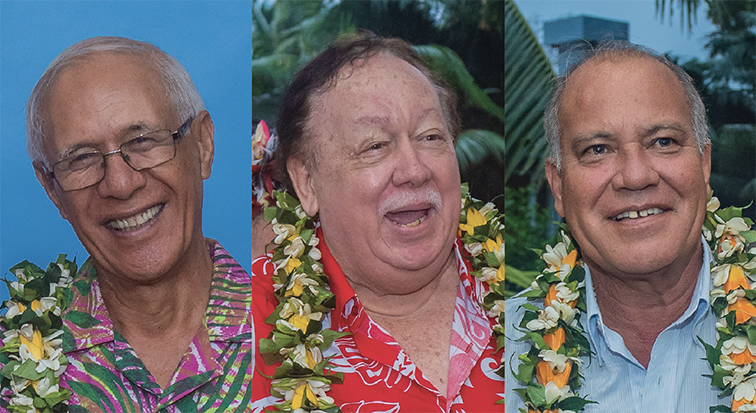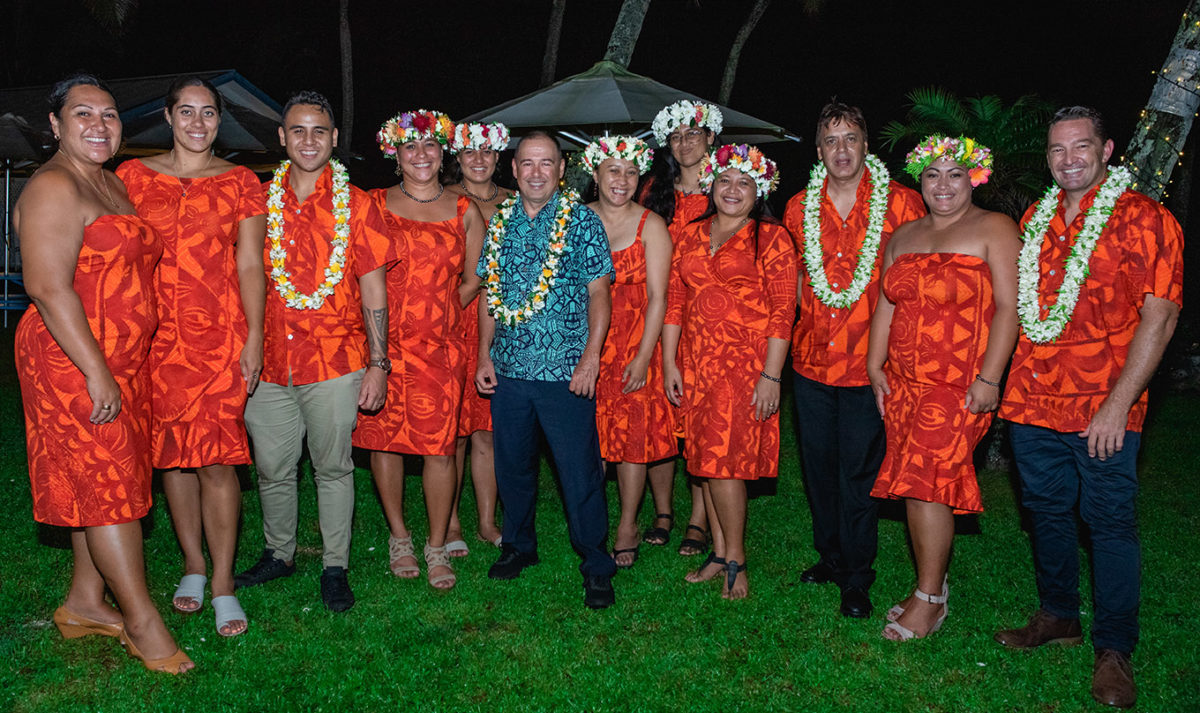Seldom does an anniversary recognise a smooth journey. Most often, it honours the fraught survival of something good — a marriage, perhaps, or a business or a child. Today, the Cook Islands National Superannuation celebrates 20 years. For the people who steered it into this moment, along a road peppered with potholes, today represents the resilience and stamina of something good.
The fund not only survived the storms, but in eight years it’s more than doubled, amassing nearly $200 million for pensioners. “Twenty years, two hundred million dollars. We’re so close it’s not funny,” said Damien Beddoes, the CEO of the Cook Islands National Superannuation (CINSF).
The story of the fund begins in the late 1990s, when three politically engaged Cook Islanders, all of them lawyers — Iaveta Short, Norman George, and Tony Manarangi — conceptualised and created a superannuation system in the Cook Islands.

Iaveta laid out his vision. The fund would, in its infancy, receive government subsidies to support its operation. He imagined legislation that would make it compulsory for employers to invest a portion of their employees’ wages. (If it were voluntary, Iaveta theorised, no one would invest. Other countries, such as Australia and the United States, have followed the same logic.) Financial managers would make careful investments to grow the fund, and ultimately it would sustain itself. Iaveta visualised it being governed by a board and The Public Trust of New Zealand, a Crown entity that specialises in protecting public investments.
Norman George, then the country’s deputy prime minister, presented the idea to his fellow decision-makers in Cabinet and Parliament. He worked on migrating pensions for members of Parliament into the fund. Tony Manarangi began writing the legislation. On the 24th day of November, the Cook Islands National Superannuation Act became law.
“It’s not sexy, but it’s innovative, it’s robust. It’s got a good purpose. It’s out there doing what it should be, as a tool, as a mechanism to support us when we retire. Although that always sounds like it’s a long way off, it comes around fast.”
Damien Beddoes – CEO Cook Islands National Super Fund
The fund was, in large measure, a success. People received tax-free pensions. (In both New Zealand and Australia, superannuation funds are taxed.) Grieving families accessed its group life policy, which ensures every contributor has life insurance equal to a year’s worth of his or her salary. Many CEOs and board members, including Kevin Carr and the late John Kenning, guided it forward.
The first major pothole appeared in 2007. Members of the business community were refusing to invest in the fund because they believed it would fail. Most had come from New Zealand, where employers are not required to pay into a retirement fund. (This is not the case everywhere; in Australia and the United States, contributing is compulsory.)
A legal dispute ensued. The high court ruled in favour of the fund’s opponents, then the appellate court sided with the fund. In 2016, after nine years of being in court, London’s Privy Council ruled in favour of the CINSF.
Beddoes, who had joined the fund amid this fracas, resolved to regain the confidence of the fund’s contributors. He wanted everyone to know that the intentions of his organisation were benevolent and worthy of trust. He adopted the goal of turning the CINSF into the country’s most open and transparent organisation.

Staff began posting financial records, audit reports, and monthly returns on the organisation’s website. Members could log in to monitor the contributions their employers made. The CINSF also began offering members a choice of investment strategy: higher risk for higher returns, moderate risk for moderate returns, lower risk for lower returns.
Perceptions began to shift. If anyone criticised the fund on Facebook, it wasn’t staff that responded; it was other members. “Just go to the website,” they’d write. “It’s all there.” Someone who participated in a poll published in Cook Islands News said he trusted the fund more than the banks.
On its 20th birthday, the CINSF celebrates being mature and out of its parents’ house. The fund is growing and no longer receiving a budget from government. It’s run by an inclusive board with members representing unions, workers, and the Chamber of Commerce.
It’s also at the forefront of innovation and digitisation in the Cook Islands. Staff created a software to track each dollar from the moment it enters the fund to the time it gets paid out as a pension. The system was so effective that national leaders turned to the CINSF for help tracking wage subsidies after Covid-19 interrupted tourism.
The CINSF has also been involved in growing regional programmes and opportunities. In 2018, the Cook Islands hosted a meeting of managers of 18 funds from 15 countries, which culminated in the birth of a regional investment forum managing combined assets of $75 billion. The partnership allows small funds to access large opportunities, as well as training and specialists.
The fund is committed to pursuing the dual goals of innovating and remaining deeply rooted in the Cook Islands. This is the essence of a new logo unveiled last week, which features three Cook Islands motifs provided by renowned local artist Mike Tavioni, which represent the unity of the Cook Islands people, good governance, and the assets the fund manages. Its leadership and staff seek to engage at a grassroots level. They work with the Ministry of Health to understand the financial implications of non-communicable disease, for example, and work on plans to assist first-time home buyers.

“I hope going forward that this fund will be recognised as something Cook Islanders should be really proud of — something they own,” Beddoes said. “It’s not sexy, but it’s innovative, it’s robust. It’s got a good purpose. It’s out there doing what it should be, as a tool, as a mechanism to support us when we retire. Although that always sounds like it’s a long way off, it comes around fast.”
